Zionist regime
-

Islamic Foreign Ministers Stress UN Presence in Gaza, Condemn Israeli Attack on UNRWA Facility
The foreign ministers of eight Islamic countries have issued a joint statement underscoring the vital role of the United Nations Relief and Works Agency for Palestine Refugees in the Near East (UNRWA) in supporting Palestinian refugees, and condemning Israel’s attack on the agency’s premises as a clear violation of international law.
-

Algerian Thinker Calls Defending Iran a “Religious Obligation and Strategic Necessity”
Algerian intellectual Yahya Abu Zakaria said defending Islamic Iran is essential for the unity and dignity of the Islamic world. He warned that Iran’s fall would expand Western and Zionist influence, urging Muslim solidarity against regional threats.
-

Israel’s Invitation of Far-Right British Figure Sparks Outrage Among Human Rights Groups
The international movement Stand Up to Racism has condemned Israel’s invitation of Tommy Robinson, the notorious far-right and anti-Muslim figure from the United Kingdom.
-

Humanitarian Catastrophe in Gaza: Orphaned Children Trapped in Nightmarish Conditions
he ongoing humanitarian crisis in Gaza has devastated the lives of thousands of children, many of whom have endured nearly two years of displacement, hunger, loss, and horrific violence. Reports indicate that more than 65,000 people have been killed, with tens of thousands of children losing their parents.
-
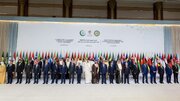
-
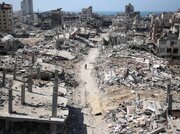
(Podcast) Israel’s Destructive Tactics in Gaza Seen as Effort to Force Palestinian Displacement
As the war in Gaza enters its second year, Israel has intensified strikes on residential buildings, actions viewed as an attempt to make the territory uninhabitable.
-
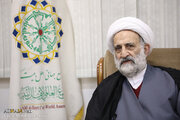
-

-
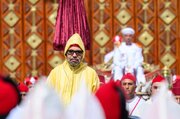
-
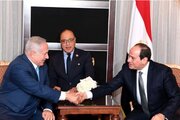
Egypt Signs $35 Billion Gas Deal with Zionist Regime Despite Full Gaza Occupation Plan
As the security cabinet of the Israeli regime approved Prime Minister Netanyahu’s plan for the full occupation of the Gaza Strip, Egypt, in a move drawing considerable attention, signed a major $35 billion energy deal with the regime.
-

Iran, Italy FMs discuss regional, intl. developments on phone
Iranian Foreign Minister Abbas Araghchi and his Italian counterpart Antonio Tajani held a telephone conversation on Wednesday to discuss the recent regional and international developments.
-
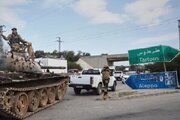
(Podcast) Support for the Druze: A Strategy by the Zionist Regime and the U.S. to Fragment Syria
Violent clashes between Hay’at Tahrir al-Sham and Syria’s Druze minority have recently intensified, escalating security threats in the region. The Zionist regime is backing the Druze to advance its expansionist goals, while the United States, alongside the occupying regime, is exploiting the crisis to fuel separatist movements and push for the disintegration of Syria.
-

(Podcast) Israel Faces Internal Turmoil as Netanyahu Battles Legal and Security Establishment
Facing mounting political turmoil and battlefield failures, Israeli Prime Minister Benjamin Netanyahu has launched an all-out campaign against the regime’s independent institutions. From dismissing the attorney general to attempting to sweep judicial reforms and attacking the head of Shin Bet, Netanyahu’s actions have triggered fierce domestic backlash and intensified Israel’s political and social unrest.
-
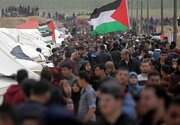
(Podcast) New Developments in Gaza Ceasefire Talks; Growing Domestic and International Pressure on the Israeli Regime
With increasing international and domestic pressure, negotiations for the second phase of the Gaza ceasefire have entered a critical stage. Hamas has agreed to form an independent committee to govern Gaza, while regional mediators are striving to reach a final agreement. Meanwhile, internal protests in the occupied territories against Netanyahu have intensified, demanding the return of prisoners.
-

(Podcast) Tel Aviv Fears Second Phase of Gaza Ceasefire; Netanyahu’s Cabinet at Risk
The second phase of the ceasefire between the Israeli regime and Hamas remains uncertain. Hardliners’ opposition, fears of Hamas gaining strength, and concerns over Netanyahu’s government collapse have stalled negotiations. While signs suggest Israeli preparations for renewed war, political and regional constraints make it difficult for the occupation to proceed.
-
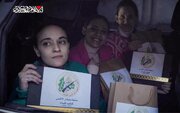
(Podcast) Gifts, Military Displays, and Psychological Warfare: Hamas’ Messages in the Prisoner Exchange
During six rounds of prisoner exchanges between Hamas and Israel, the group reinforced its psychological warfare by presenting symbolic gifts to released Israeli captives, such as an hourglass and a gold ring. The display of weapons seized from the occupying army was also part of this strategy. These actions not only influenced public perception but also served as a propaganda tool to showcase the strength of the resistance against Israeli occupation.
-
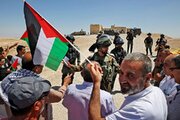
The Zionist mischief aimed at sowing discord among Palestinians
Amidst the Zionist regime and Zionist lobbies in various Western countries striving to destroy the Palestinians and the ideology of resistance, the foremost priority for Palestine and its people is to implement a comprehensive plan for the unity of the Palestinian nation.